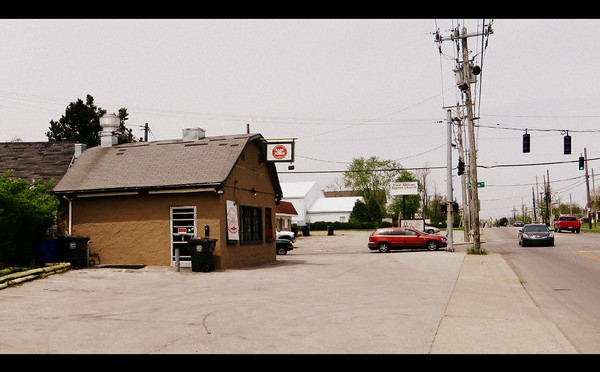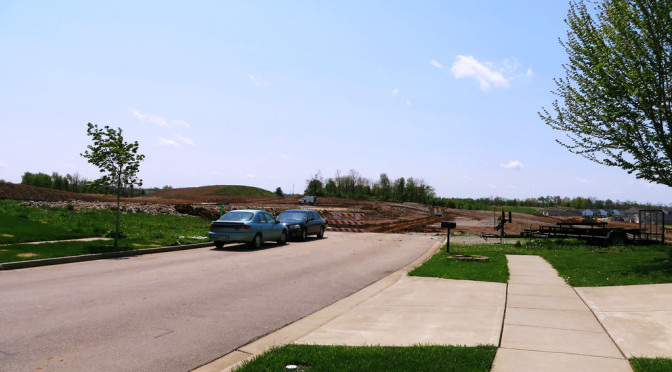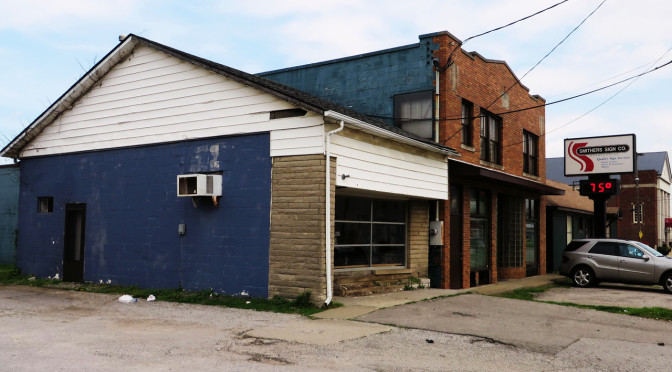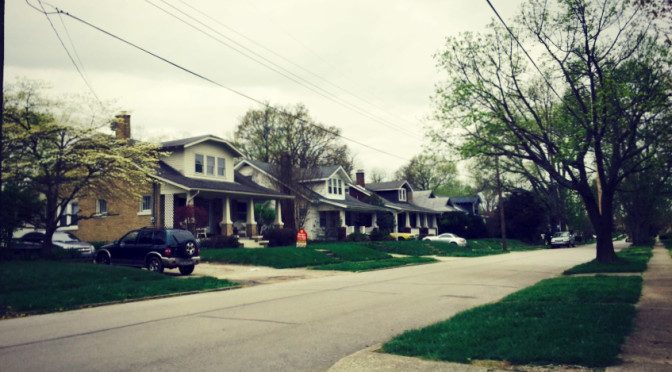[load]
Another visit to one of the areas along Kenesaw Road, featuring large houses, limited setbacks, tall trees and a nearby park. All of these things contribute to a rich feel. This neighborhood uses decorative lampposts as a distinguishing element but they are overwhelmed by the design of the streets themselves.Monthly Archives: April 2015
Day 100-Walk and talk
[load]
I had hoped that my 100th walk would be loaded with interesting things and valuable insights, but it didn’t exactly work out that way. While there were lots of signs of both economic trouble (vacant buildings) there were also signs of investment (construction projects, institutions that were doing fine). There were a lot of people out today, very much in line with other heavily African-American neighborhoods in the city which in general feel more outwardly more social.Day 99-Skeletons
[load]
This was an entertaining walk through a neighborhood that is still being built out. In addition to gaps between houses, lots that haven’t been built on yet, preparations are underway for the next addition to the subdivision to the south. Its nice to get a peek at the skeleton of the city under construction. In this case it appears that existing streets are generally to be extended to the south. (This confirms the story told by the current map of the city, and discussed a few days back, on Day 91).
The new Citation Road is also visible from this subdivision, just west of where it crosses Greendale Road. Citation Road is being managed by the Kentucky Transportation Cabinet, which has has details on the project.
Day 98-Sum of Products
[load]
This route passes through a few distinct areas just west of downtown along Versailles Road, including industrial buildings along Trafton, stub neighborhoods along Halls and Devine, commercial space on Sparta and retail establishments along Versailles.
The key learning for me came from a short discussion I had with one of the denizens of the area while waiting for a light. I commented on the difficulty of riding along Versailles on a bicycle, as she was doing. She was very matter-of-fact about it. She shrugged and said “you get used to it.” And this is true. Really, this stretch of road isn’t much worse than some streets I walked along frequently not long ago. Which isn’t to say that there aren’t improvements that could and should be made here. It does point out that, terrifying though they may seem, the perception of danger may be amplified by thinking too much about it. It is at least possible to get around by walking along streets like Versailles.
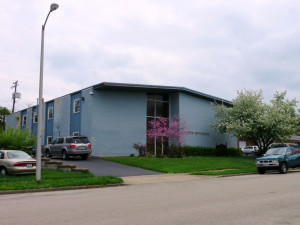
Day 97-Nicholasville Rd Dead Ends Part 1
[load]
Along Nicholasville Road, just south of the UK campus and across from Central Baptist Hospital, there are a series of dead end streets or isolated neighborhoods bordered on the west by Nicholasville Road and on the east by CSX railroad right-of-way. This route walked down the northenmost two streets, Cherokee Park and Suburban Court.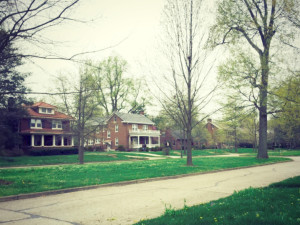
This winds up being a story of two streets. Suburban Court is nice enough, but not as luxurious as Cherokee Park, which sports larger lots, a wide grassy median, even taller trees. Both streets are long dead-ends (some of the streets further south connect within small neighborhoods even when they don’t provide an easy way across the tracks). But while Cherokee Park ends in a loop with houses backing to the CSX right-of-way, the end of Suburban Court is less subtle, with a couple of warning reflectors and a few thin shrubs. Houses on the other side of the track are tantalizing close. It’s interesting how design decisions made 80 years ago are still apparent today. Good design is undervalued even now–for example, consider two neighborhoods, one with trees placed in the tree lawn by the developer, the other without. How much will the difference in curb appeal be worth, relative to the cost of the tree today? The core of the issue may be an agency problem. The developer has no interest in planting trees without recouping the cost; it’s difficult to justify such things in a cost-cutting environment. Still, the end result is needless differences in structural design between neighborhoods. (Could we ask whether building in such stratification by neighborhood is necessary to begin with? I think so, but that is a question for another time.)

